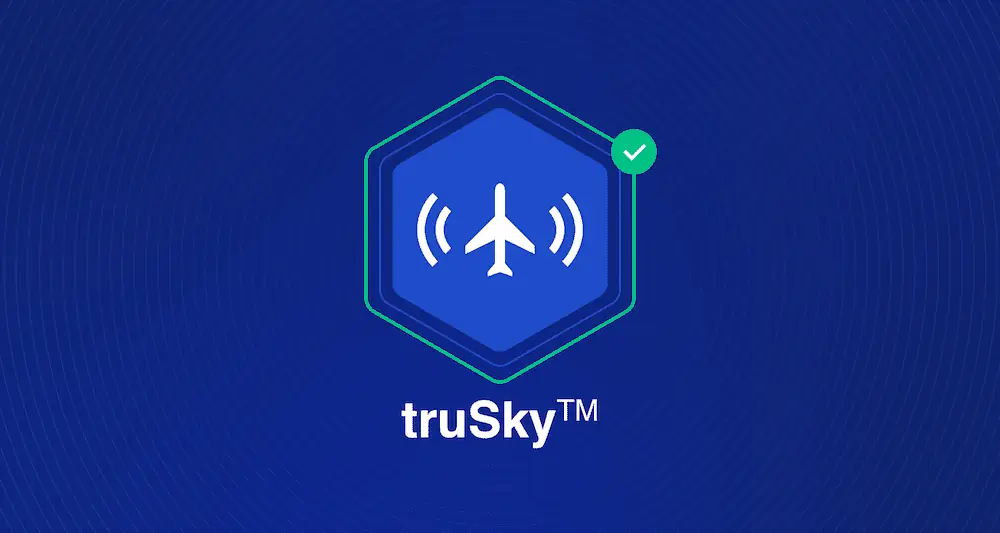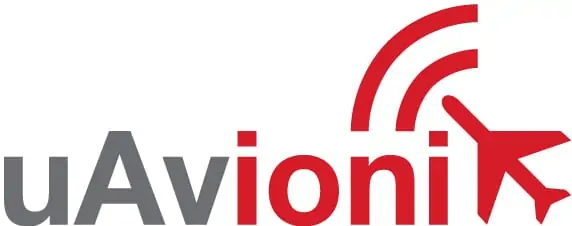
uAvionix has introduced truSky ADS-B ‘spoofing’ detection for its SkyLine Unmanned Aerial System (UAS) Beyond Visual Line Of Sight (BVLOS) services.
According to uAvionix, this innovation will give pilots and controllers confidence by validating that an individual aircraft ADS-B signal is coming from an aircraft and not being broadcast as a means to fake or spoof the signal.
ADS-B Spoofing & Validation
ADS-B spoofing refers to the malicious manipulation of ADS-B signals to transmit false information about an aircraft’s position, velocity, and identification. This interferes with Detect and Avoid (DAA) and Air Traffic Control (ATC) systems, compromises airspace awareness, and leads to safety and security risks.
ADS-B can be a great DAA technology, but without validation, there is a risk that the incoming ADS-B information is misleading. According to uAvionix, the hazards arising from ADS-B spoofing have been discussed in numerous articles and reports, which caution pilots to be wary of relying on unvalidated ADS-B in critical applications.
ADS-B validation refers to the process of checking and verifying the accuracy and integrity of the data transmitted by an aircraft. This can include cross-checking the information with other sources of air traffic data and monitoring for any anomalies or inconsistencies in the signals. The goal of ADS-B validation is to ensure the information being transmitted can be trusted so that UAS operators and ATC can make informed decisions and maintain safe separation between aircraft.
Introducing truSky
The new uAvionix truSky validation process uses a network of multiple low-cost and low-profile deployed dual-frequency (1090MHz and 978MHz) ADS-B ground receivers to evaluate each signal transmitted from the aircraft. The system then instantly compares the received signals to confirm that the signal originated from the aircraft’s position.
When enough sensors are available, truSky uses a number of methods to backwards calculate the aircraft’s position and compares it to the position contained within the ADS-B transmission.
Using Doppler information, multilateral timing, and aircraft kinetics, the calculation produces a validation score on each aircraft to provide the confidence and safety margin required for BVLOS operations. This process requires a tightly integrated and secure network of receivers with precision timing capabilities such as those provided by the uAvionix SkyLine platform.
Visual Confidence
When used within the uAvionix SkyLine platform, each aircraft track point is color-coded based on its confidence score.
In the example below, an aircraft departs Denver airport with only visibility to a single receiver (red), but quickly gets picked up by a second (yellow), then a third (green) receiver. When used with the SkyLine API, the validation score is transmitted along with the position updates of the aircraft.
An FAA whitepaper published in 2017 titled: ‘White Paper: FAA position on use of ADS-B for Alerting and Guidance’ concludes with the following:
“For DAA systems, the implications of this policy are as follows: DAA Warning guidance may only be generated on ADS-B tracks that have been validated […]. DAA guidance to regain well-clear may only be generated on tracks that have been validated. DAA Caution suggestive guidance may be generated by unvalidated ADS-B tracks. If the DAA system is being integrated with the UAS flight control system to automate maneuvers, the guidance system may only maneuver automatically against ADS-B tracks that have been validated.”
Until truSky, validated ADS-B signals required high-cost MLAT sensors, primary radar, or onboard Traffic Collision Avoidance Systems (TCAS) to correlate aircraft positions.
truSky is being piloted in numerous locations in the United States, and is available as a component of uAvionix’s SkyLine UAS BVLOS service or as an API for integration into UAS GCS, UTM, or ATM platforms.











